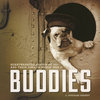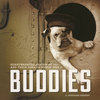New, Quality Books - 50-90% off, over 2500 titles
Your basket is empty.
Categories Last Chance to buy! 1940: The Second World War In the Air In Photographs
Categories War & Militaria AN EXTRAORDINARY ITALIAN IMPRISONMENT
Categories Lucky Dip Clearance BUDDIES
Categories Last Chance to buy! CAMBRIDGE IN THE GREAT WAR
Categories Last Chance to buy! DEATH IN THE AIR
Categories War & Militaria FIX BAYONETS!
Categories Last Chance to buy! MANCHESTER'S MILITARY LEGACY
Categories Lucky Dip Clearance SMALL WARS AND THEIR INFLUENCE ON NATION STATES
Categories Last Chance to buy! YORK'S MILITARY LEGACY
Categories Lucky Dip Clearance TO WAR WITH THE WALKERS
1940: The Second World War In the Air In Photographs
Book number: 91705
Product format: Paperback
In stock
£5.00
Customers who bought this product also bought
|
|
|
|
|
|
|
|
Browse these categories as well: Last Chance to buy!, Transport, War & Militaria
AN EXTRAORDINARY ITALIAN IMPRISONMENT
Book number: 91858
Product format: Hardback
In stock
£7.50
Customers who bought this product also bought
|
|
|
|
|
|
|
|
Browse these categories as well: War & Militaria, War Memoirs
Customers who bought this product also bought
|
|
|
|
|
|
|
|
Browse these categories as well: Lucky Dip Clearance, War Memoirs, War & Militaria, Pets
CAMBRIDGE IN THE GREAT WAR
Book number: 91863
Product format: Paperback
In stock
£2.50
Customers who bought this product also bought
|
|
|
|
|
|
|
|
Browse these categories as well: Last Chance to buy!, Great Britain, Maps & the Environment, War & Militaria
Customers who bought this product also bought
|
|
|
|
|
|
|
|
Browse these categories as well: Last Chance to buy!, War & Militaria, War Memoirs
Customers who bought this product also bought
|
|
|
|
|
|
|
|
Browse these categories as well: War & Militaria, Collectables/Antiques
MANCHESTER'S MILITARY LEGACY
Book number: 91869
Product format: Paperback
In stock
£3.50
Customers who bought this product also bought
|
|
|
|
|
|
|
|
Browse these categories as well: Last Chance to buy!, Great Britain, Maps & the Environment, War & Militaria
SMALL WARS AND THEIR INFLUENCE ON NATION STATES
Book number: 91871
Product format: Hardback
In stock
£3.50
Customers who bought this product also bought
|
|
|
|
|
|
|
|
Browse these categories as well: Lucky Dip Clearance, History, War & Militaria
YORK'S MILITARY LEGACY
Book number: 91874
Product format: Paperback
In stock
£4.00
Customers who bought this product also bought
|
|
|
|
|
|
|
|
Browse these categories as well: Last Chance to buy!, Great Britain, Maps & the Environment, War & Militaria
TO WAR WITH THE WALKERS
Book number: 91887
Product format: Paperback
In stock
£2.00
Customers who bought this product also bought
|
|
|
|
|
|
|
|
Browse these categories as well: Lucky Dip Clearance, War & Militaria, War Memoirs

















































































